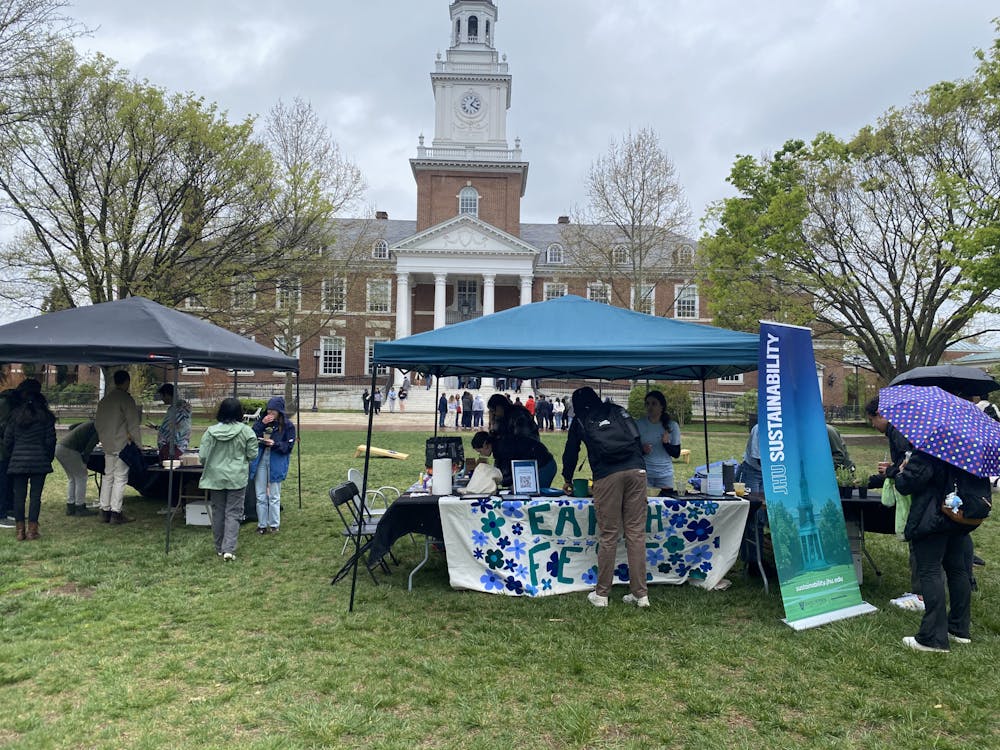The U.S. Department of Agriculture (USDA) will look into whether the University breached the Animal Welfare Act after multiple citations of accidental animal deaths in research labs, including a rabbit that died from asphyxiation in a cage-washing machine and two monkeys that were strangled by chains in their cage.
Following a Jan. 5 complaint from animal rights watchdog group Stop Animal Exploitation Now (SAEN), the USDA investigated University facilities on Jan. 28 and found that the factors leading to the accidental deaths had not been fully corrected.
USDA Public Affairs Specialist Tanya Espinosa wrote in an email to The News-Letter that although the agency is looking into the animal deaths, they have not yet opened an official investigation.
“We are currently looking into this facility to see whether Animal Welfare Act noncompliances have occurred, but that is different than an investigation. However, we may decide to open an investigation if needed,” Espinosa wrote.
According to a press release from SAEN, they urged the USDA to seek the maximum legal penalty — $10,000 per violation per animal.
“The negligence which allowed primates to die of strangulation and a rabbit to be cooked to death deserves the maximum penalty,” SAEN Executive Director Michael A. Budkie wrote in a press release.
Documents obtained by The News-Letter last year found that between December 2011 and September 2013, the University self-reported eight separate violations of National Institutes of Health (NIH) animal welfare policies which resulted in the deaths of 480 animals, including one guinea pig, two monkeys, six rats and 471 mice.
Alka Chandna, a senior laboratory oversight specialist for the People for the Ethical Treatment of Animals (PETA), said that she was disturbed, but not surprised, by the most recent reports of accidental animal deaths in Hopkins labs.
“It was like déjà vu all over again,” Chandna said. “It’s a bit befuddling because I feel like we’ve been here before, and Johns Hopkins has been fined before.”
Dr. John J. Pippin, the director of academic affairs for the Physicians Committee for Responsible Medicine (PCRM), expressed disappointment in the University’s continued use of animals in medical research and courses.
“It seems that the attitude at Hopkins is that animals can be used for whatever you want,” Pippin said.
Dr. Robert Adams, associate provost for animal research and resources, wrote in an email to The News-Letter that measures have been taken since the recent incident to prevent future accidents.
“In compliance with our PHS [Public Health Services] Assurance, we report any situation that results in the injury or death of an animal to OLAW [NIH’s Office for Laboratory Animal Welfare] explaining what happened and what we are doing to prevent a similar occurrence in the future,” Adams wrote. “We are constantly evaluating our practices for animal care and those for doing research, and unfortunate occurrences such as these do make us think of new or better ways to do things. We take the utmost care of our animals and, when these events occur, do everything possible to examine what happened, learn from the situation and improve our processes to prevent the same things from happening again.”
Adams wrote that the monkeys were strangled by a chain outside of their cage that helps keep a divider in place. He wrote that monkeys used for different studies are often housed in the same cage.
“This monkey reached outside of the cage, pulled the chain in and got it wrapped around his neck,” Adams wrote. “We now have wrapped all of these chains in PVC tubing and secure them so they stay outside the cage.”
Despite these efforts, the USDA found in a Jan. 28 report that similar chains on cages at another lab run by the University had not been adjusted following the monkeys’ deaths.
“Although the facility recognized the ongoing risk of chains, they failed to identify potentially hazardous chains in all housing areas for [non-human primates],” the USDA report stated.
Adams wrote that the rabbit’s death resulted from human error.
“We now have changed our process so that each cage is checked by two different people before washing,” Adams wrote.
According to Chandna, PETA has pushed the University to adjust its research practices many times in the recent past.
“This is something we’ve tried to raise with administrators at Johns Hopkins previously, and our concerns have fallen on deaf ears,” Chandna said. “I hope that public scrutiny and the USDA’s investigation and maybe some sense of ethics and concern about animals will enter into how they think about what’s going on in the laboratories so they can make a change.”
Adams asserted that the University cares deeply about the welfare of animals in their research labs.
“Accidental deaths are very rare,” Adams wrote. “We care very deeply about the safety of our research program. SAEN obtained reports that the University voluntarily filed with the OLAW in compliance with our approved Assurance. OLAW has accepted our corrective action plans.”
Adams also defended the University’s use of animals in medical research.
“Biomedical research, like many other areas of scientific investigation and discovery, advances by small steps. But using animal models is critical for these advances, and all the animal studies are reviewed by the IACUC [Institutional Animal Care and Use Committee],” Adams wrote.
Pippin said that using animals is not only unnecessary for medical research, but is also ineffective and unethical.
“Aside from the point of treating these animals as disposable equipment, we need more places to begin employing non-animals methods of doing this research instead of continuing to kill animals this way,” Pippin said.















Please note All comments are eligible for publication in The News-Letter.